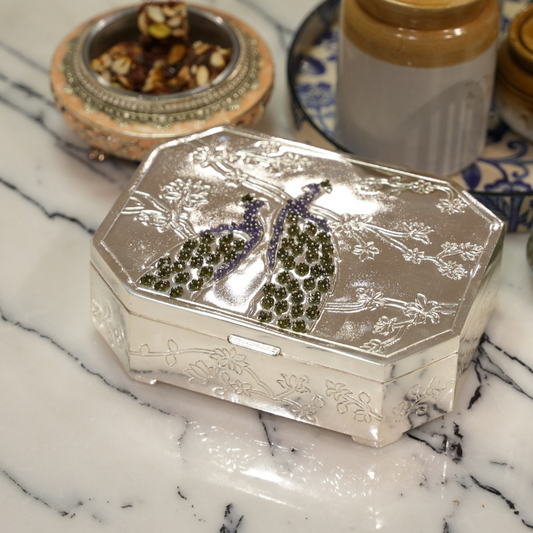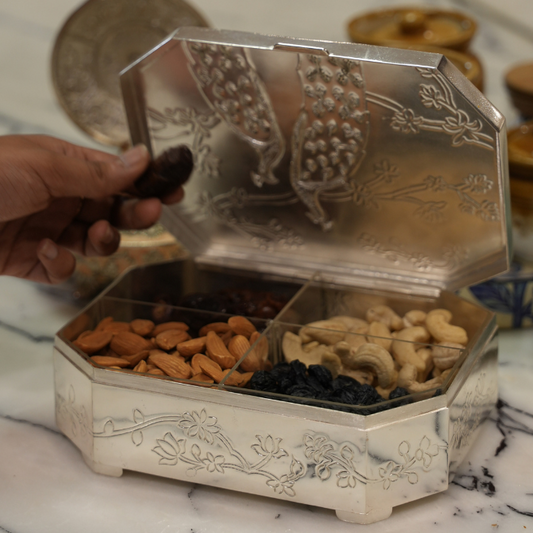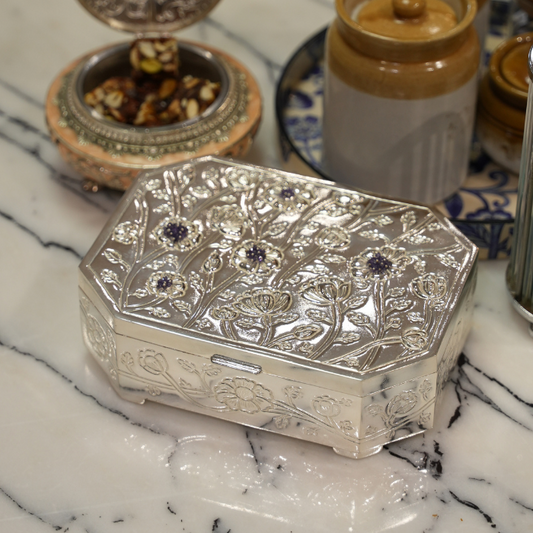Silver vs Sterling Silver: Key Differences, Benefits & Buying Guide
Silver has long been associated with wealth, purity, and classic style. It still has cultural and utilitarian value in everything from coins and heirlooms to contemporary silver objects, pooja objects, and upscale presents.
However, many people get confused between silver vs sterling silver when they're shopping. Are they identical? Which one ought to be purchased? Let's explain the differences so you can make wise decisions.
What is Pure Silver?
-
Pure silver (often called fine silver) is 99.9% pure metal.
-
Although it is soft and pliable, it is not the best material for jewellery that is used on a daily basis.
-
Coins, collectibles, traditional pooja objects, and decorative items are among the common uses.
It is less useful for things that require strength because it is delicate. This is where the question arises - what is the difference between silver and sterling silver?
What is Sterling Silver?
-
92.5% silver and 7.5% other metals, typically copper, make up sterling silver.
-
Copper gives it strength, durability, and suitability for everyday objects.
-
Sterling silver is frequently used in jewellery, dinnerware and presents.
-
The "925" hallmark stamp, which is a universal indicator of purity, is always present on genuine sterling silver.
When comparing sterling silver vs silver, the key lies in durability and practicality.
Difference Between Silver and Sterling Silver
Here’s a quick side-by-side look at the difference between sterling silver and silver:
|
Feature |
Pure Silver |
Sterling Silver |
|
Purity |
99.9% |
92.5% |
|
Strength |
Very soft, less durable |
Strong and durable |
|
Tarnishing |
Tarnishes slowly |
Tarnishes faster due to copper |
|
Cost |
Higher |
Slightly more affordable |
|
Common Uses |
Coins, pooja items, collectibles |
Furniture, gifts, jewellery, utensils |
So, if you’re wondering what’s the difference between sterling silver and silver, this comparison highlights both purity and practicality.
Which is Better: Silver or Sterling Silver?
The answer depends on your purpose:
-
Pure silver → best for collectors, traditional rituals, and symbolic items.
-
Sterling silver → perfect for jewellery, luxury furniture, gifting, and long-term usability.
As suggested by Maharani by Rungtas: "Sterling silver is preferred for premium gifting and furniture because of its durability and long-lasting shine."
This clears the common question - which is better silver or sterling silver?
Does Sterling Silver Tarnish?
Yes, the copper content of sterling silver causes it to tarnish over time. However:
-
Tarnish can be removed easily with polishing.
-
Tarnish is slowed down by storing things in dry, airtight containers.
-
Long-lasting brilliance is ensured by routine cleaning.
Even pure silver tarnishes, though this happens less frequently because functional items are rarely made of it. Ever wonder if sterling silver tarnishes? Yes, but it's manageable.
How to Identify Silver vs Sterling Silver
To ensure you're purchasing genuine goods:
-
Verify the hallmark; sterling silver ought to bear the "925" designation.
-
Silver is not magnetic, according to the magnet test.
-
Check the weight: plated items feel lighter than sterling silver.
-
Always purchase from reputable companies that offer hallmark certification and authenticity assurance.
This guarantees that you receive real value, which is crucial when purchasing expensive silver furniture and presents.
Why Choose Maharani by Rungtas for Silver & Sterling Silver
-
Professionally crafted pooja objects, and high-end gifts.
-
Authenticity is assured through hallmark certification.
-
A reputable history of providing high-end silver goods in India.
Maharani by Rungtas guarantees unparalleled quality, regardless of your preference for the durability of sterling silver or the purity of silver.
Conclusion
In summary, silver is symbolic, traditional, and pure. Sterling silver is strong, adaptable, and useful.
Maharani by Rungtas provides authenticity, craftsmanship, and trust to customers looking for high-end silver furniture and gifts.
Explore our exclusive silver collections today.
FAQs
Q1. What is the difference between silver and sterling silver?
Sterling silver is made up of 92.5% silver and 7.5% copper for strength, whereas pure silver is 99.9% pure.
Q2. Which is better: silver or sterling silver?
Pure silver works well for coins and traditional items, but sterling silver is more durable for jewellery, furniture, and everyday items.
Q3. Does sterling silver tarnish?
Yes, it tarnishes over time but can be polished back to shine.
Q4. Is sterling silver real silver?
Yes, it is genuine silver, with 92.5% pure content.
Q5. How can I tell if jewelry is sterling silver?
Look for the “925” hallmark stamp, which certifies authenticity.







